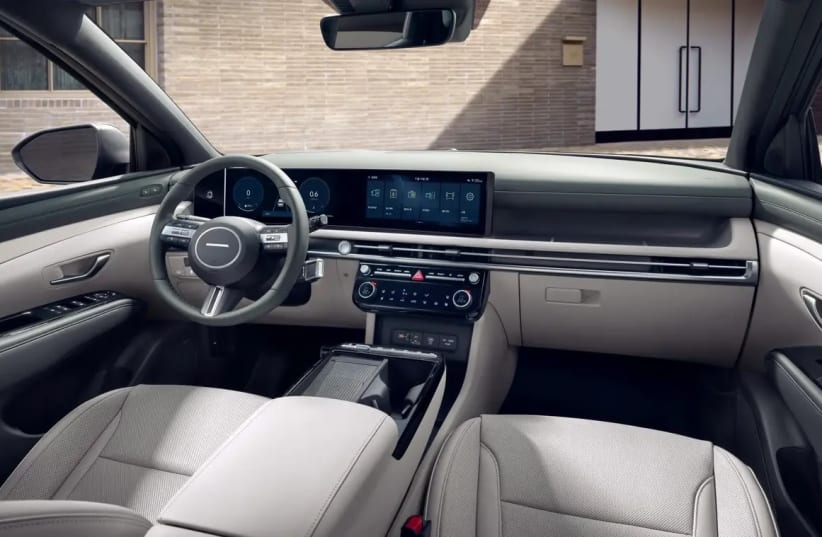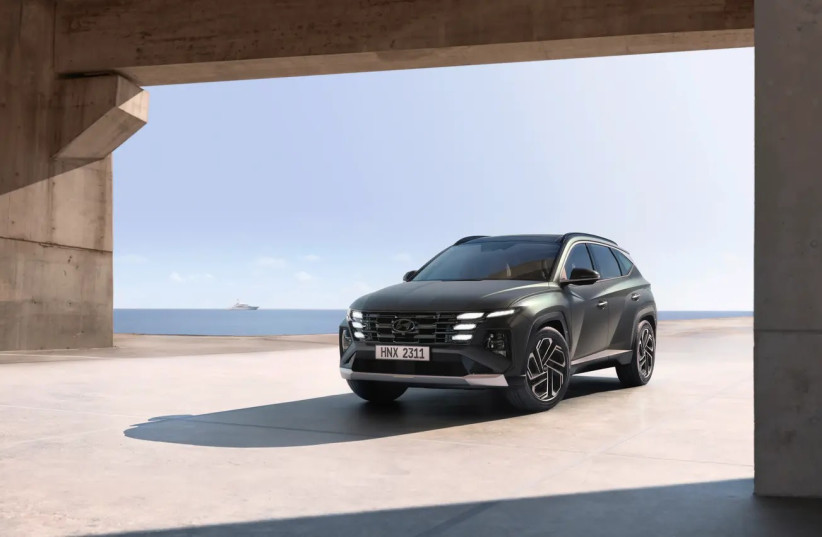After selling over 73,000 units in Israel since 2005, the fourth-generation Hyundai Tucson arrives in the country following a facelift. Prices have risen by NIS 5,000 to NIS 20,000. Globally, the Tucson celebrated the production of its 2 millionth vehicle this week.
The changes begin with the design, featuring a new front and updated wheels. All trim levels will be offered with a two-tone color scheme.
The driver’s environment has been redesigned, including the dashboard, central console, steering wheel, and central armrest. The main novelty of the facelift, beyond the driver environment inspired by the Ioniq 5, is the pair of 12.3-inch screens, one for multimedia and operation and the other for the instrument cluster, which will only be available in the two higher trim levels. The two base trims, mainly sold to fleet customers, will include a partial digital instrument cluster. Wireless mobile charging, becoming increasingly common, will only be offered in the highest trim level.
From now on, the Tucson will only be marketed with a 1,600 cc turbo gasoline engine, but it is weaker than the previous generation, with 160 hp instead of 180, and 27 kgm of torque. Acceleration from 0 to 100 km/h takes 9.9 seconds instead of 8.8 seconds. Fuel consumption remains nearly identical at 14-14.5 km/l in combined driving, according to the manufacturer.
The base Premium trim (from NIS 185,000) includes a 12.3-inch multimedia screen, Android Auto and Apple CarPlay compatibility, a 4.2-inch digital instrument cluster, a rearview camera, electric mirror folding, mirror-mounted turn signals, LED headlights, light sensor, rain sensor, dual-zone climate control with rear seat vents, a smart key for entry and ignition, a 12V socket, and two USB ports (regular and C) in the central console, 2 USB ports in the rear seat, and a 12V socket in the trunk. There are also 18-inch alloy wheels.
The Panoramic trim (from NIS 193,000) adds a panoramic sunroof, interior LED lights, ambient lighting, and passenger seat height adjustment.
The Luxury trim (from NIS 205,000) upgrades to 19-inch alloy wheels and an advanced instrument cluster: steering wheel-mounted paddle shifters, a gear selector on the steering column, which frees up a full 12.3-inch digital instrument cluster, an auto-dimming interior mirror, LED rear lights, one-touch folding rear seats, and a power tailgate.
The Elite trim (from NIS 220,000) adds power front seats with lumbar adjustment, leather upholstery with heated and ventilated front seats, wireless mobile charging, all-around parking sensors, and a 360-degree camera system.
Safety: The Tucson receives a new central airbag between the driver and passenger, joining autonomous emergency braking, lane departure correction and keeping, driver alertness warning, rear seat child alert, road sign recognition, and automatic high beams. However, adaptive cruise control, intersection crossing detection, blind spot monitoring, and reverse emergency braking are only offered from the Luxury trim. The Elite trim adds an active collision warning and prevention system for parking entry and exit, and a display of rear surroundings when signaling, to detect cars, bicycles, or scooters in the blind spot.

